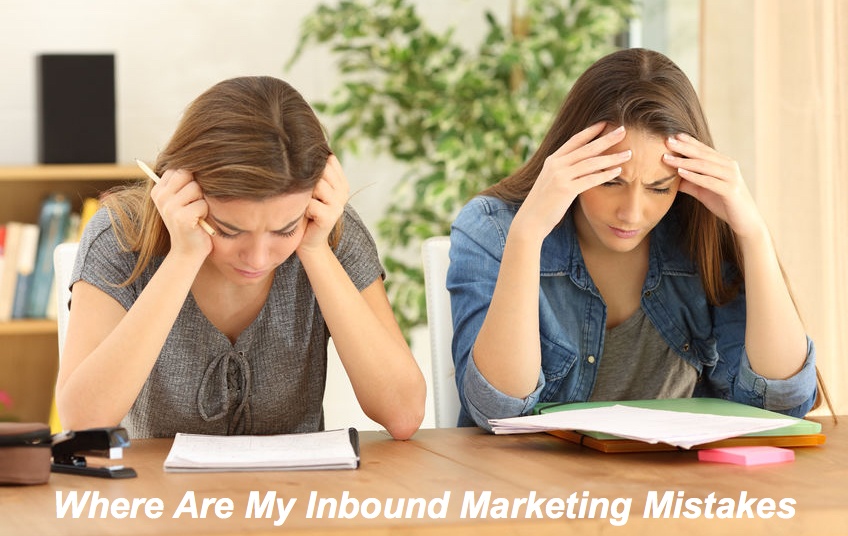
If there’s anything marketers have in common, it’s the goal to find methods to generate more highly-targeted leads. After all, this is the way to boost your revenue and expand your business. But how do you get there?
It requires a strategy that’s effective, measurable, and scalable. To date, there’s nothing that meets these criteria better than inbound marketing. What’s great about the inbound methodology is that it enables you to attract qualified prospects and convert them into leads using foundational content that is delivered through blogs, eBooks, email, automation, social media and other digital tools and content.According to the B2B Procurement Study from the Acquity Group, 94 percent of business buyers do some form of online research before deciding on a product or service:
Prospects spend a lot of time reading content published by businesses they’re considering. This speaks volumes about the importance of content in marketing. A whopping 80% of business decision makers prefer getting information about a brand from an article.
Needless to say, if you’re not already implementing an Inbound Marketing program, then it’s time to start. But in doing so, some businesses report that they have not realized the results they expected from Inbound.
We have heard people who have not had a good experience with inbound describe their experience in many ways:
Like any tool or methodology, if Inbound is not implemented correctly, then it just is not going to work for your business. On the other hand, when done well, Inbound generates a continual stream of sales-ready leads to help your business grow.
Bristol Strategy has done what I like to call "Inbound Marketing Rescues." A business leader intuitively likes Inbound Marketing because it is prescriptive, targeted and measurable. But if they are not experiencing the results they expected, many seek third-party experts like Bristol to help them diagnose what's wrong.
Dave describes the 7 common problems with inbound marketing and how to solve them in this video.
Difficulty with audience engagement is a challenge many brands experience. About 77% of agencies say poor website user experience is one of the biggest weakness for their clients. When you have poor user experience, you’ll see signs like a high bounce rate and depending on how well each page tells your brand story, you will also see a low time on page.
Once you look into the common reasons why users become disengaged, you can easily see what needs to be done. Here’s a quick look at the most common ones:
Poor website design: Nearly 40% of visitors stop engaging if images don’t load or if the layout or content is unattractive.
Poor mobile-optimization: Google says 61% of users are unlikely to return to a mobile site they had trouble accessing and 40% visit a competitor’s site instead. As of March 2017, 80% of top Alexa websites were mobile adaptive.
Poor user experience: About 47% of site visitors go directly to a products/services page and 86% prefer to see info about products/services on the home page.

The key to overcoming these three issues is to locate the usability problems on your site and fix them. For instance, is your site layout professional, organized, and easy to navigate? When visitors come to your site, are they getting the information they need quickly? You want your home page to be insightful and your navigation buttons visible and easy to understand so visitors can get to the content they need quickly.
And as the market trends listed above show, let’s not forget the importance of mobile-optimization. Not only do you need it to appease the many mobile users, but you also need to do it to maintain your rank in the search engine results pages (otherwise known as SERPs). If you’re not mobile-optimized, then your rankings will suffer, along with user engagement.
You can simply make upgrades to your site page by page or do a complete overhaul with the help of an expert. This article describes the website design process we used for our own website and those of our clients.
With all of your enthusiasm and excitement, you learn about inbound marketing and jump right in without a clear plan. That’s the way it goes for countless B2B businesses – around 68% to be exact.
One of the leading problems with not developing a clear Inbound Marketing strategy is you are implementing without a clear plan for the content that is the foundation of your site. If the content is not relevant to the visitor's needs, then they’re less likely to convert into a lead.
Only 12% of marketers are actually crafting content with specific customers (buyer persona) in mind. The major concern here is that it takes consistency in publishing and quality to attract and retain your audience.
So how should businesses address this issue? To develop a strategy around a particular persona and their specific buyer’s journey. Every page and blog post on your website should be geared towards a specific audience who’s in a specific area of your funnel - called a buyer's journey stage.
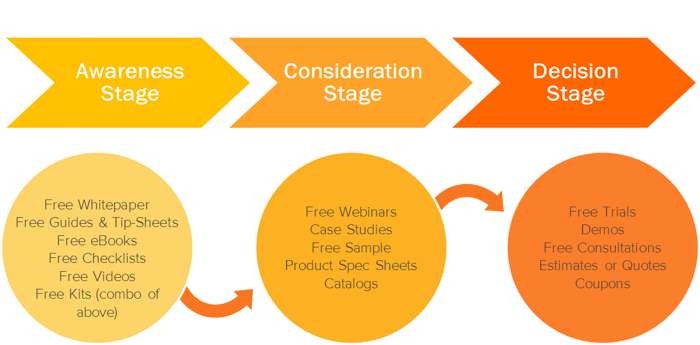
If you haven’t already done so, it’s important to create buyer persona profiles for each of the groups you market to. You can use this for all of your content marketing efforts – email, ads, and blogs to make them more personal and engaging.
One analogy to help you gain insight into inbound marketing is with a real estate example.
In a sense, you can think of Inbound Marketing as buying a home. Once you purchase it, it's yours forever -- it's the same with the content investment portion of Inbound Marketing. Once you purchase it, you own it forever and continues to perform for you as long as you have the content published on your blog or website.
PPC, on the other hand, is like renting a property. It's only yours for as long as you're paying for it. As soon as you stop, you're evicted from your apartment. And once you stop paying for your ads, they're removed by the ad publisher and no longer generate leads.
Moz created a blog article and a whiteboard Friday by Rand Fishkin titled "Surviving the SEO Slog" where he described the gap of disappointment - image below. The key point is, it takes time for content you create and publish to have an impact on traffic and leads. We have found that a good measure of progress is to use a tool like Moz or SemRush and report the number of organic keywords that rank in the top 3, 10 and 100 of search. As you publish and rank, your business will see more (non-branded) keywords rank over time. Stick with your Inbound Marketing investment and it will pay off.
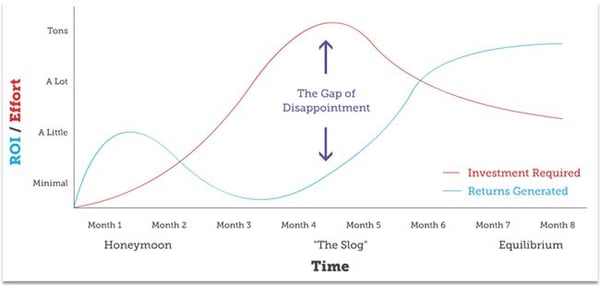
First, set your expectations correctly. Secondly, invest in PPC to drive leads while your investment builds organic results. Pay-per-click is an important element of your digital marketing strategy. PPC is not something you want to use alone and it should not be your only tactic for attracting visitors and generating leads.
This is why some marketers implement PPC ads into their content strategy. It’s a quick way to start generating traffic while your investment in content gradually ranks in organic search. Then, once your content starts bringing in organic traffic, you can scale back on your paid ads.
As a business owner or marketer, it’s essential to develop an inbound methodology that’ll provide consistency for your brand. If you have the above strategy in place, you will begin to see results within months. You will experience continued traffic growth over time as long as you continue to publish valuable content.
One reason brands are implementing inbound marketing is because it costs 62% less than other marketing methods. Almost 75% of companies say Inbound Marketing is increasing their lead quality and quantity once you pass the gap of disappointment, this is because your ideal prospect is finding you (through organic search) precisely when they need your products or services.
This is likely the reason why 91% of B2B marketers and 86% of B2C marketers are now using Inbound Marketing strategies. With the right mix of content and paid ads on social and search, you can generate leads that convert, thus boosting marketing ROI.
You understand the importance of Inbound Marketing and building a solid strategy that’s effective. But what if your efforts get bottlenecked because you don’t have enough manpower or financial resources? If you’re a medium or small business, then you likely don’t have a large marketing department to handle your content needs.
This is why 62% of marketers are struggling with posting content at least once a week. And that’s a major problem because 90% of customers expect consistent interactions across channels with brands.
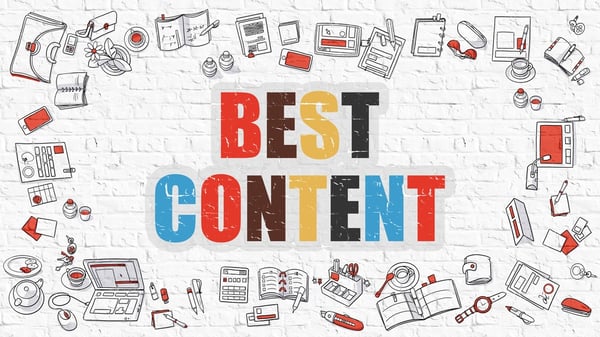
This will keep you ahead of your publishing calendar and ensure your brand is consistently connecting with your audience. Be sure to test their writing style and quality. There are a lot of bad freelance writers out there but you can find the good ones.
By hiring a professional writer, you ensure your content is great quality, engaging, and optimized for SEO and conversions. Why is this important? Because almost 60% of people say they won’t use a company with poor grammar and spelling mistakes on their website and marketing materials.
Trying to go it alone may inhibit the success of your inbound marketing campaign in more ways than one. This is especially true if you’re not producing targeted content on a regular basis. Your best bet is to hire an inbound marketing agency to help you manage and outsource at least a portion of your content.
Calls-to-Action offers (CTAs) are the bread and butter of inbound marketing. If you’re publishing content that’s getting the attention of your target audience, but they’re not converting, then you have to look at your calls to action and premium offers that they promote (or lack thereof).
Once businesses put content in place, they often either have too few conversion opportunities (offers and forms that convert a visitor into a lead) or they have not used the analytics to optimize the conversion of the visitors into leads.
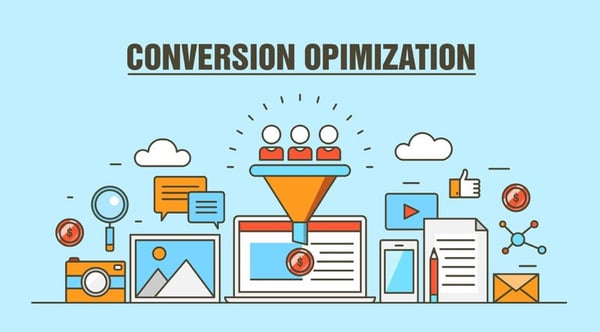
First, understand the principals of Conversion Rate Optimization (CRO) and then look at your highest converting pages and optimize those pages first. Then work down the list to increase the number of leads you’re generating. As your visitor traffic grows, your lead flow will accelerate.
Every form of content you create, whether it be text, image, or video, should contain a CTA. 90% of website visitors that read your headline will also read your CTA.
CRO should not be limited to your website content. It should also be applied to your email campaigns. Emails with just one clear and strong CTA see 371% more clicks. Then CTAs in videos help boost conversions by 144%. This all shows how effective a simple call to action can be for your inbound strategy.
Now, it’s very important to point out that all of your marketing methods should integrate seamlessly together. If your content marketing campaigns, email campaigns, advertising campaigns, and social media campaigns aren’t aligned, then your inbound marketing is not optimized for success.
Businesses may attempt to implement inbound marketing with a variety of digital marketing tools, none which work together. This approach creates a productivity problem for the marketer and a lack of visibility across marketing methods.
They can’t obtain the analytics they need to understand which of their campaigns are generating leads and opportunities for their sales team. Then there’s the inability to understand the ROI of their marketing investment. Business leaders should strive to trace website visitors from first visit source all the way to a sale. With these metrics, you gain the insight into where to invest more.

The solution is to consolidate the digital marketing tools into one tool that’ll implement it all while also providing the analytics needed to optimize performance. In the beginning of this article, we shared that business leaders wanted a marketing strategy that was effective, measurable, and scalable. Integrated tools enable scalability and measurability.
We have said before that we use the Hubspot platform for Inbound Marketing and Sales Enablement because it is easy to use, guides the user in ways to optimize results and is very effective. Previously, before adopting Hubspot we use Wordpress for websites, Hootsuite for social media, Mail Chimp for email, Google Analytics for website metrics and more. Daily work required logging into different platforms, trying to understand the intersection of how social media affected a website campaign. The problem was not the availability of metrics in each tool, it was tying it all together to measure the contribution of each element of our strategy toward the sale.
The most important capability that pushed us over the edge and has been a key enabler to success when adopting Hubspot is the ability to know what an individual contact did, which content they consumed, and how they behaved both on and off of our website. We look at this data across contacts that purchased and those who did not. These insights enable us to continually refine what and how we do it, so we are constantly improving our digital marketing approach.
As you can see throughout this article, inbound marketing yields some pretty impressive results. This leads to brands jumping on the bandwagon without fully aligning their sales and marketing teams with a unified strategy.
A common problem for many is that the marketing team has one point of view of a great lead and the sales team has another. If the team that’s working hard and generating content to attract leads is focused on the wrong target, then the leads will have a lower conversion rate into a sale.
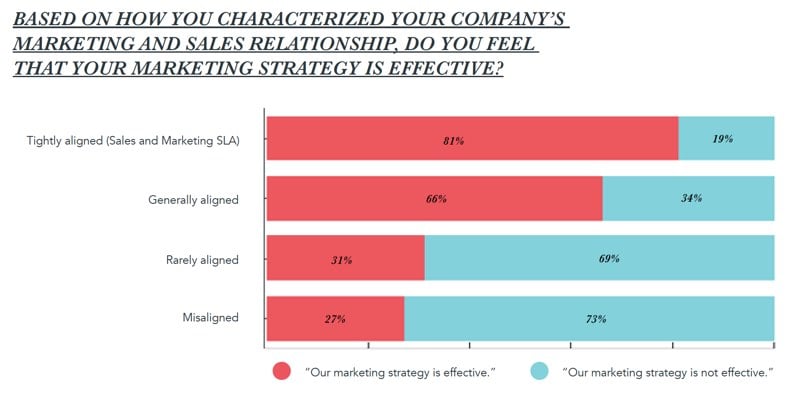
The chart above ( from the state of inbound 2018 report ) makes the point extremely well. When marketing and sales teams are aligned, the teams report that their marketing strategy is effective.
Marketing and sales should not only meet once, they should structure a documented working agreement and meet weekly to measure progress and results. This type of tight partnership will ensure the most effective business results are realized.
When your sales and marketing strategies are in alignment, you can witness a 36% higher customer retention rate and a 38% higher sales close rate. It is amazing that such a simple topic can have a significant impact to success.

Now that you have all this information, what should you do next? If there’s anything you take from this piece, it’s that it’s absolutely critical to have a holistic view of inbound marketing and the strategy to implement it correctly.
You need a plan for all the elements required to enable your sales and marketing to work together to boost traffic, as well as conversions into opportunities for sales. With this, your business will succeed with Inbound Marketing and realize a positive ROI for your investment in it.
If you’d like assistance with building personas, content, or inbound marketing strategies, we would be excited to help. Contact us today to learn more and request an inbound marketing assessment to understand the gaps in your current plan.
Bristol Strategy is a full funnel inbound marketing agency and inbound sales agency offering the full complement of Inbound Marketing services that enable our clients to surpass their business objectives by transforming the way they engage with their buyer on-line. Reach out to us to learn more about how our experience and capabilities can help your business grow.
First Image Copyright: 123RF Stock PhotoAsk us about our unique approach that creates a full-funnel "inbound" engagement model for your business that attracts and converts digitally engaged prospects.